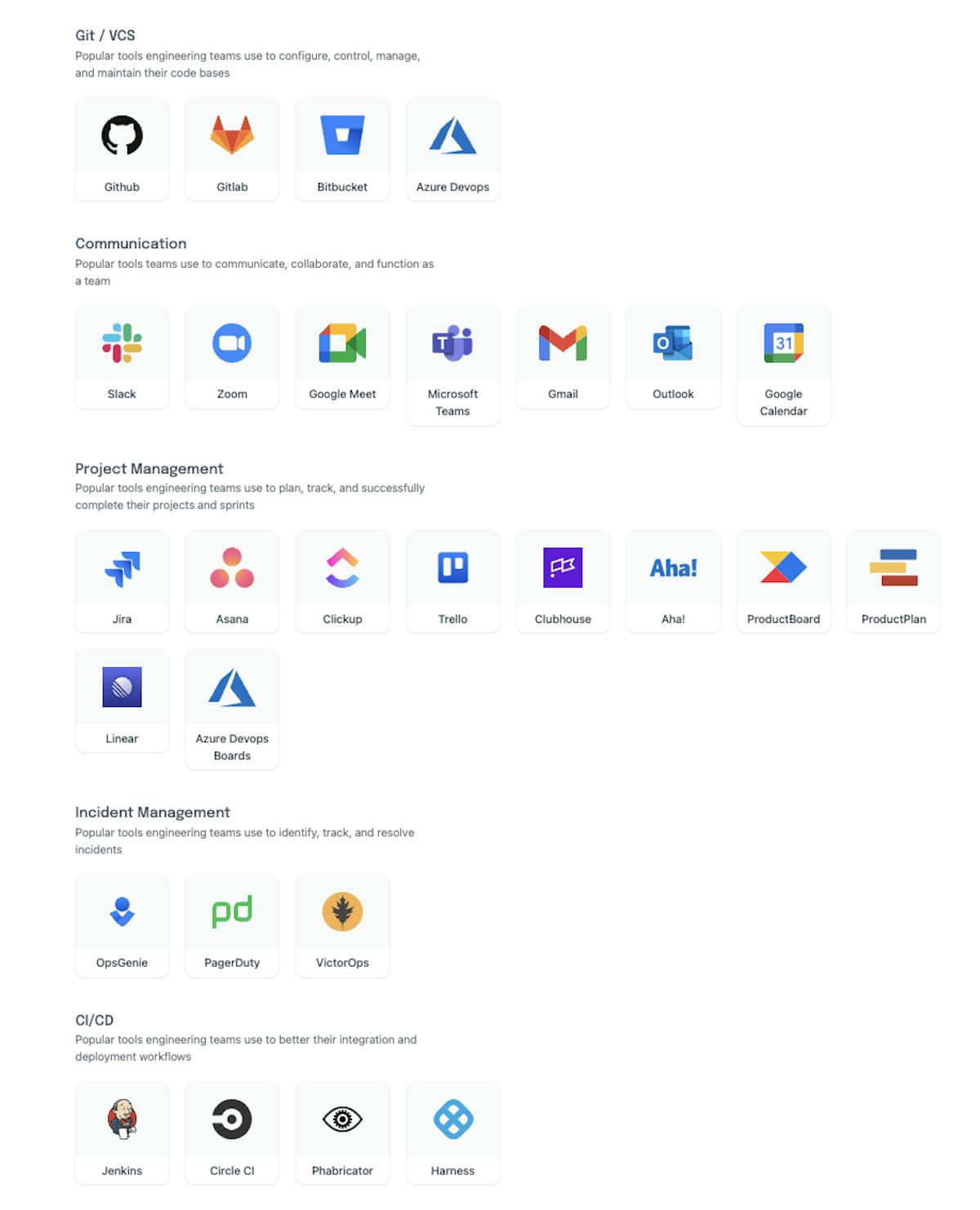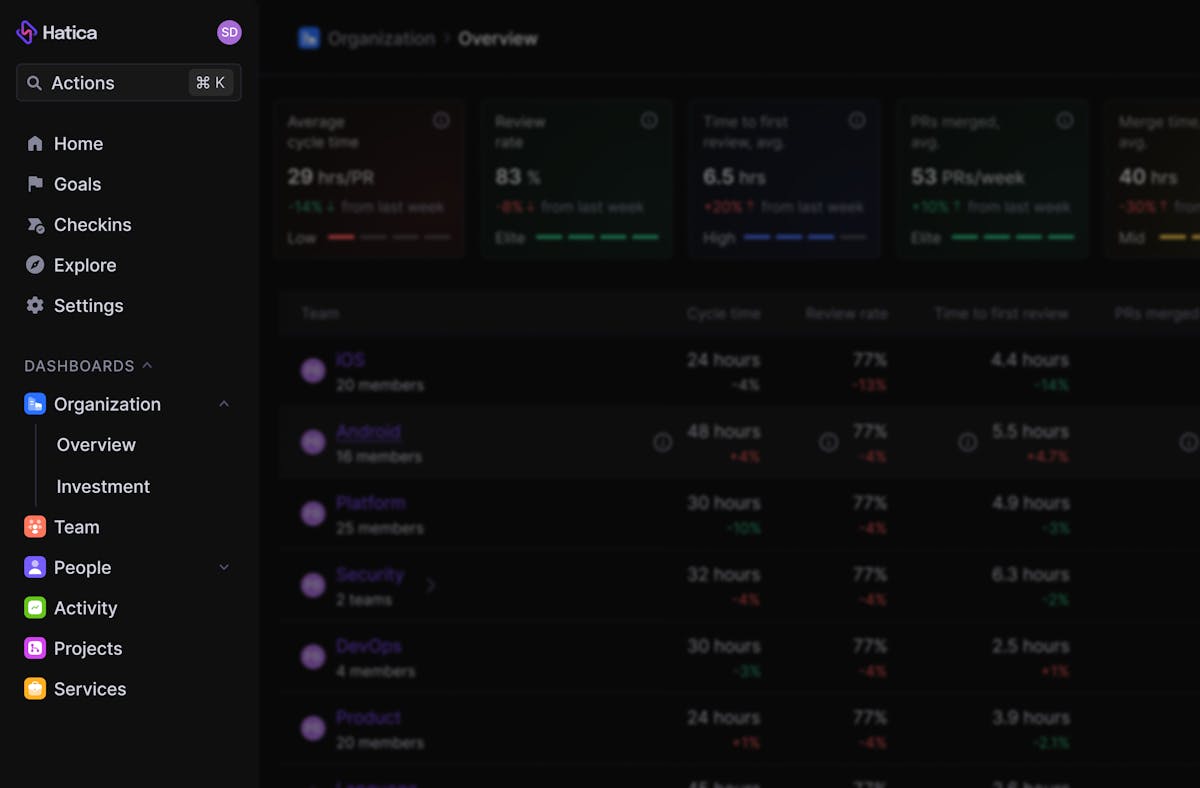Finding the perfect engineering analytics tools is tough! This challenge doesn't stem from a lack of available software analytics tools; in fact, the market is saturated with options.
The real challenge is sifting through all these choices to find the one that truly helps your team shine.
Engineering teams today face a double whammy: a growing workload with limited resources. The rise of AI and automation only intensifies the pressure. In this environment, proving your team's worth to higher-ups and evaluating your processes can feel almost impossible. It's not just about completing tasks; it's about demonstrating the impact of your work with clear data and insights.
Moreover, stakeholders demand transparency and accountability, and without the right tools, providing concrete evidence of your team's productivity and contributions can feel like an uphill battle.
The right tool should make your life easier, not harder. It should be your secret weapon for improving processes internally, communicating effectively within your organization, and showcasing your engineering team's true value.
This blog will help you pinpoint the mistakes you might be making when choosing an engineering analytics tool, so you can find the perfect fit and finally ditch the data haystack!
Mistake #1: Ignoring the Specific Needs of Your Team
One of the biggest mistakes you can make when choosing an engineering analytics tool is ignoring the unique needs of your team. Every engineering team has its own workflow, priorities, and challenges. A tool that works well for one team might not necessarily be the best fit for another.
Identify Your Team’s Key Metrics
Think about the data that truly matters to your team and stakeholders. Are you laser-focused on improving code quality? Maybe deployment frequency is your top priority, or perhaps fostering better collaboration is key. Understanding these priorities will be your roadmap to selecting a tool that directly impacts your team's success.
For example, if your team is all about speeding up deployments through CI/CD, metrics like build success rates, how often you deploy, and how quickly you recover from issues become crucial. On the other hand, if code quality is your north star, look for tools that provide in-depth code review insights, track defect rates, and measure test coverage.
This will set the stage for the right engineering analytics tool for your engineering team, tailored to your specific needs!
Involve Your Team in the Selection Process
Don't go it alone!
Including your team in the decision-making process is essential. Talk to developers, team leads, and anyone else who will be using the tool. Understanding their pain points and requirements will ensure the chosen tool tackles your team's specific challenges and gets buy-in from the people who will be using it day-to-day.
Mistake #2: Putting Too Much Emphasis on Developer Performance.
When you focus heavily on performance metrics alone, such as lines of code written, number of commits, or bugs resolved, you risk encouraging quantity over quality. Developers might prioritize boosting their individual stats rather than contributing meaningfully to the team’s goals. This can lead to rushed code, increased technical debt, and a decline in overall code quality.
For example, a developer might prioritize writing more lines of code quickly, rather than ensuring that the code is clean, well-documented, and efficient. This focus on output rather than outcome can have long-term negative effects on the project's success and maintainability.
On the flip side, such an approach could also lead to the developers and software engineering to think of this engineering analytics tool as a performance monitoring tool which is extremely counterintuitive. So it is important to pivot the focus towards overall developer experience rather than developer performance.
That leads me to find a balanced approach while selecting an engineering analytics tool.
Adopting a Balanced Approach
To truly measure and enhance developer productivity, it's essential to adopt a multidimensional approach. This means balancing qualitative and quantitative metrics and giving equal importance to developer experience and performance.
The SPACE framework emphasizes this balance and is quickly gaining traction among engineering leaders. It encourages a more holistic approach to measuring developer well-being. This framework considers factors like satisfaction, activity levels, communication and collaboration, and workflow efficiency.
Integrating the SPACE Framework
Fortunately, many engineering analytics tools are evolving to include built-in team health features that align with the SPACE principles. These features can help you nurture a positive developer experience by measuring crucial aspects of team well-being.
For example, tools that incorporate the SPACE framework can provide insights into:






